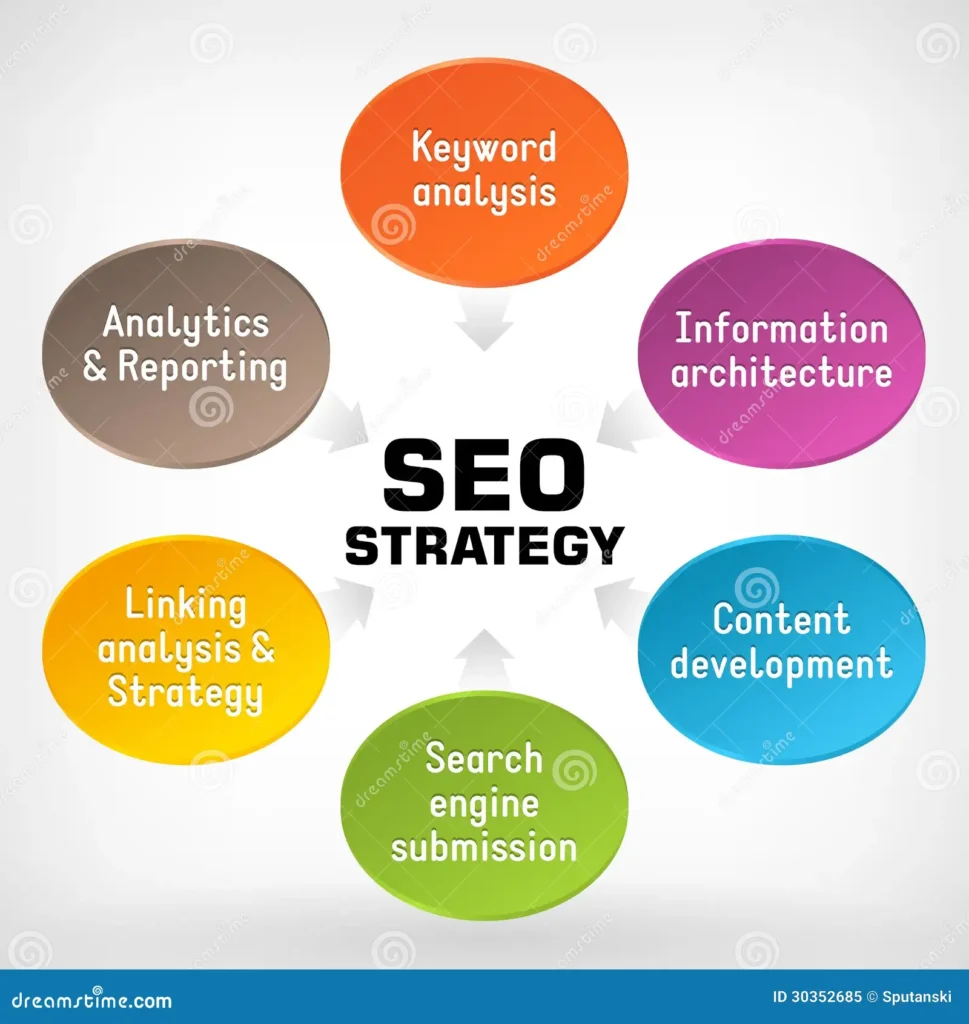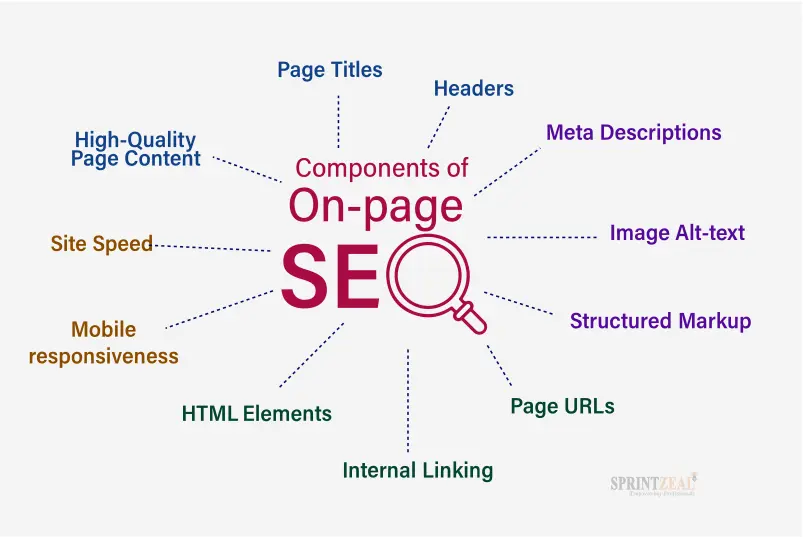In today’s digital world, having a strong SEO strategy is crucial for increasing website visibility, driving organic traffic, and improving search engine rankings. SEO is a long-term investment that, when executed correctly, can significantly enhance your online presence and generate more leads and conversions. Here’s a step-by-step guide to creating a successful SEO strategy.

1. Understanding SEO Strategy and Its Importance
SEO involves optimizing a website to rank higher on search engines like Google, Bing, and Yahoo. A well-optimized website attracts more organic traffic, enhances user experience, and builds credibility. Since most users rarely go beyond the first page of search results, ranking high is essential for business success.
2. Conducting Keyword Research
Keyword research is the foundation of any SEO strategy. It involves identifying the words and phrases your target audience is searching for. Here’s how to do it effectively:
- Use keyword research tools like Google Keyword Planner, Ahrefs, SEMrush, and Ubersuggest.
- Focus on long-tail keywords that have lower competition but higher conversion potential.
- Analyze competitor keywords to understand what works in your industry.
- Consider search intent (informational, navigational, transactional) when selecting keywords.
3. Optimizing On-Page SEO Strategy
On-page SEO refers to optimizing individual pages to rank higher and earn more relevant traffic. Key elements include:
- Title Tags & Meta Descriptions: Include primary keywords in title tags and meta descriptions to improve click-through rates.
- Header Tags (H1, H2, H3, etc.): Use structured headings to enhance readability and keyword optimization.
- URL Structure: Keep URLs concise, descriptive, and keyword-rich.
- Internal Linking: Link to relevant pages within your website to improve navigation and SEO value.
- Content Optimization: Use primary and related keywords naturally within your content while maintaining readability and user engagement.
4. Crafting High-Quality Content
Content is king in SEO. Search engines prioritize valuable, relevant, and high-quality content. Follow these best practices:
- Create original, engaging, and informative content that solves user queries.
- Use a mix of text, images, infographics, and videos to enhance user experience.
- Update and refresh old content to keep it relevant.
- Implement a content calendar for regular blog updates and website content refresh.
5. Enhancing Technical SEO Strategy
Technical SEO ensures that search engines can crawl, index, and rank your site effectively. Key aspects include:
- Website Speed Optimization: Use tools like Google PageSpeed Insights to improve load times.
- Mobile-Friendliness: Ensure your site is responsive and optimized for mobile users.
- Secure Website (HTTPS): Use SSL certificates to enhance website security.
- Structured Data (Schema Markup): Help search engines understand your content better and enable rich snippets.
- XML Sitemap & Robots.txt: Ensure proper indexing and navigation by search engine crawlers.
6. Building a Strong Link-Building SEO Strategy
Backlinks are one of the most significant ranking factors. To build a solid link profile:
- Obtain high-quality backlinks from authoritative sites.
- Use guest posting on reputable industry blogs.
- Leverage influencer outreach and collaborations.
- Avoid spammy or low-quality backlinks, as they can harm your rankings.
7. Leveraging Local SEO for Businesses
For businesses targeting a local audience, optimizing for local SEO is essential:
- Claim and optimize your Google My Business (GMB) profile.
- Encourage customer reviews and respond to them promptly.
- Optimize local citations and directories like Yelp, Bing Places, and Apple Maps.
- Use location-specific keywords to rank better in local searches.
8. Monitoring & Analyzing Performance
SEO is an ongoing process that requires constant monitoring and adjustments. Use analytics tools like:
- Google Analytics: Track website traffic, user behavior, and conversion rates.
- Google Search Console: Monitor search performance, crawl errors, and index status.
- SEMrush / Ahrefs: Analyze keyword rankings, backlinks, and competitor performance.
- Adjust strategies based on data insights to improve performance.
9. Keeping Up with SEO Trends & Algorithm Updates
Search engines frequently update their algorithms, affecting website rankings. Stay ahead by:
- Following SEO news on platforms like Search Engine Journal, Moz, and Google Webmasters.
- Adapting to changes like Core Web Vitals, AI-generated search results, and voice search optimization.
- Implementing best practices in E-A-T (Expertise, Authoritativeness, and Trustworthiness).
Conclusion
An effective SEO strategy requires a combination of keyword research, on-page optimization, content creation, technical SEO, link building, and continuous monitoring. By implementing these best practices, your website can achieve higher search rankings, increased organic traffic, and better user engagement, leading to long-term digital success.
Start optimizing today and stay ahead of your competitors in the ever-evolving world of SEO!









Leave a Reply